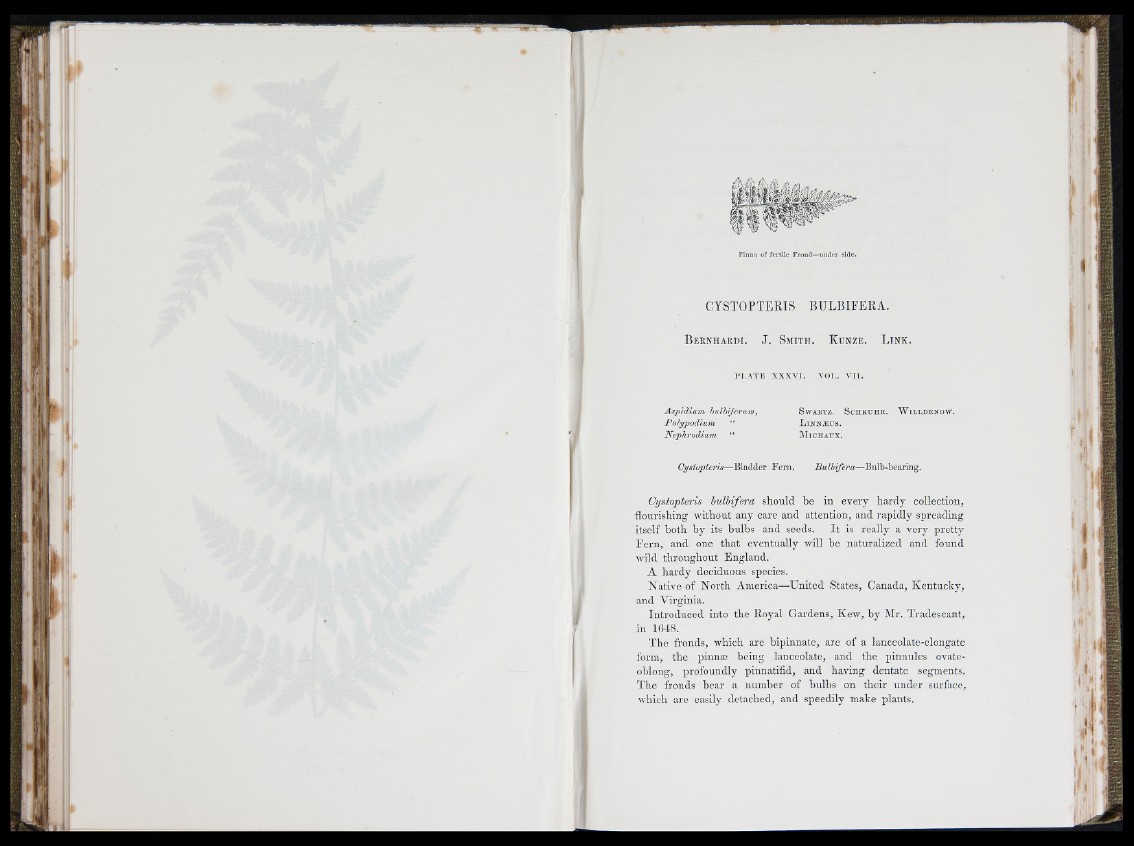
Pinna of fertile Frond—under side.
CYSTOPTERIS BULBIFERA.
B e r n h a r d !. .1. S m it h . K d n z e . L in k .
P r .A T E X X X V I . VOL . V I I .
Asp id ium h dhiferum,
Polypodium “
Nephrodium “
SWAKTO. ScHKUHK. "W lL L D E N O W .
L i n n i e u s .
M ic h a u x .
Cystopteris—Eladder Fern. üiiIAi/èr«—Bulb-bearing.
Cystopteris bulbifera should be in every ha rd y collection,
flourishing rvithout any care and attention, and rapidly spreading
itself both by its bulbs and seeds. I t is really a very p re tty
F e rn , and one th a t eventually will be naturalized and found
wild throughout England.
A ha rd y deciduous species.
Native of N o rth America—Un ited States, Canada, K en tu ck y ,
and "V^irginia.
In tro d u c ed into the Royal Gardens, Kew, hy Air. Tradescant,
in 1648.
The fronds, which are bipinnate, are of a lanceolate-elongate
form, the pinnæ being lanceolate, and the pinnules ovate-
oblong, profoundly pinnatifid, and having dentate segments.
I'h o fronds hear a number of bulbs on th e ir un d e r surface,
which are easily detached, and speedily make plants.
i' I
' 'I
t .fi
,r<il
'Y.;